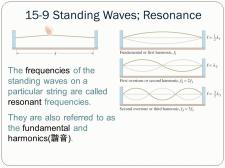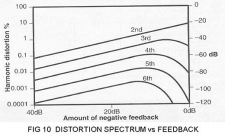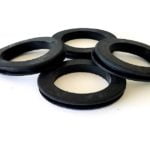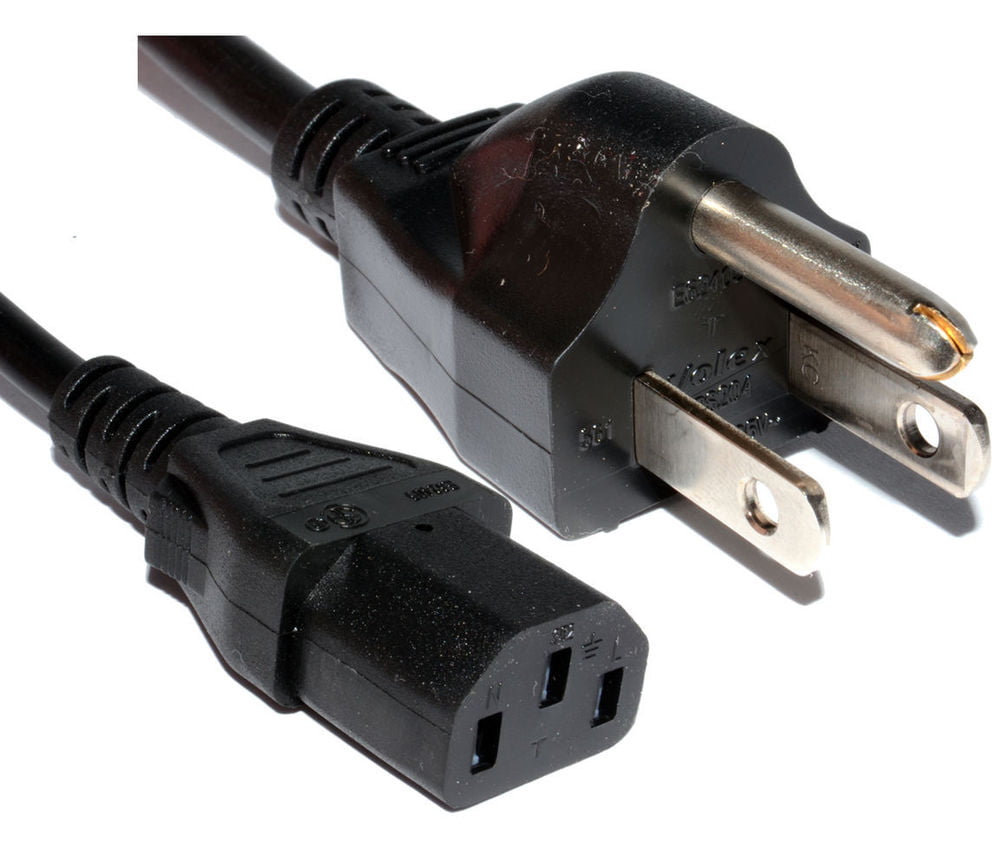It’s the time of year for saving money!
In my last article, Part 8 of this continuing series about phonograph records and the equipment for playing them, I wrote about motion and about resonance, which is motion at a particular frequency that’s usually so small and so quick that it’s invisible to the human eye, but can still, if not properly controlled, have a huge effect on the sound of our systems – no matter how exotic, how blessed by reviewers, or how dauntingly expensive they might be.
 Resonance, I wrote is universal, with every physical object in the universe having a “fundamental” resonance – a frequency at which it will vibrate when stimulated by any frequency at all, from a single pulse up to whatever may be the range or our measuring equipment, and also having “harmonic resonances”, which are resonances at exact multiples (Fx2, Fx3, Fx4, etc.) of that fundamental resonance frequency, again, to as far out as we can measure them (and probably more). For all of these, the frequency of resonance, whether fundamental or harmonic, remains constant but its amplitude (its “loudness” – how much of it there will be) varies with the amount of difference in frequency (in Hertz or octaves) between the frequency of stimulus and the frequency being stimulated: The closer the stimulating frequency is to the frequency being stimulated, the greater the resonant amplitude will be, and the farther apart they are, the less.
Resonance, I wrote is universal, with every physical object in the universe having a “fundamental” resonance – a frequency at which it will vibrate when stimulated by any frequency at all, from a single pulse up to whatever may be the range or our measuring equipment, and also having “harmonic resonances”, which are resonances at exact multiples (Fx2, Fx3, Fx4, etc.) of that fundamental resonance frequency, again, to as far out as we can measure them (and probably more). For all of these, the frequency of resonance, whether fundamental or harmonic, remains constant but its amplitude (its “loudness” – how much of it there will be) varies with the amount of difference in frequency (in Hertz or octaves) between the frequency of stimulus and the frequency being stimulated: The closer the stimulating frequency is to the frequency being stimulated, the greater the resonant amplitude will be, and the farther apart they are, the less.
One major area of concern for resonant effects that I’ve mentioned before is the cantilever of a phono cartridge which, by resonating, can lead to a rising frequency response and related distortion. Another major concern is the resonant by-product of cartridge compliance, tonearm mass and cantilever and other resonances which, at the other end of the frequency spectrum, can, if it’s too low, actually throw the stylus out of the groove of even just a moderately warped record.
 Resonant energy stimuli for a phono system can be externally-originated (such as somebody accidentally knocking the turntable or its mounting base, or simply walking too-heavily, too close to it on a less-than-solid floor). Or the stimulating energy can arise as feedback, either acoustical, mechanical, or both, from an uncontrolled re-cycling of the record player’s own output. If you have very young children or a “playful” cat, or if you live in a house or apartment with a “springy” floor or noisy neighbors, you may already understand about purely external stimuli. And if you’ve ever been to a place where the PA system was turned up too loud and the microphone picked it up the sound from the system’s own speakers and turned it into a world-destroying howl, you’ll know what I mean by feedback. In the case of the screeching microphone, the feedback, being (at least primarily) airborne, is said to be “acoustic” and, if the speakers shake the floor, which shakes the equipment rack, stand, or table, which shakes the turntable, which shakes the tonearm, which shakes the cartridge, which turns the shaking, along with the signal from the groove, into output, which gets amplified and sent off to the speakers, which shake the floor, and so on, around and around, we say the feedback is mechanical.
Resonant energy stimuli for a phono system can be externally-originated (such as somebody accidentally knocking the turntable or its mounting base, or simply walking too-heavily, too close to it on a less-than-solid floor). Or the stimulating energy can arise as feedback, either acoustical, mechanical, or both, from an uncontrolled re-cycling of the record player’s own output. If you have very young children or a “playful” cat, or if you live in a house or apartment with a “springy” floor or noisy neighbors, you may already understand about purely external stimuli. And if you’ve ever been to a place where the PA system was turned up too loud and the microphone picked it up the sound from the system’s own speakers and turned it into a world-destroying howl, you’ll know what I mean by feedback. In the case of the screeching microphone, the feedback, being (at least primarily) airborne, is said to be “acoustic” and, if the speakers shake the floor, which shakes the equipment rack, stand, or table, which shakes the turntable, which shakes the tonearm, which shakes the cartridge, which turns the shaking, along with the signal from the groove, into output, which gets amplified and sent off to the speakers, which shake the floor, and so on, around and around, we say the feedback is mechanical.
 Another kind of feedback – “electrical feedback” – does exist and, as audiophiles, it’s almost certain that we’ve all heard of it. “Negative feedback”, the kind we’re most likely to have encountered, is where a portion of the signal from [typically an amplifier or preamp circuit] is purposely “fed back” into the signal path out-of-phase, with the intent of correcting distortion or other signal anomalies or increasing stability in an electrical circuit. Although feedback is an important issue in electronics design, and there’s been a war over how much, how little, and what kind of it to use for many years, electrical feedback is not the kind of feedback we’re concerned with here, so let’s – until perhaps some future time and another article – set it aside for now.
Another kind of feedback – “electrical feedback” – does exist and, as audiophiles, it’s almost certain that we’ve all heard of it. “Negative feedback”, the kind we’re most likely to have encountered, is where a portion of the signal from [typically an amplifier or preamp circuit] is purposely “fed back” into the signal path out-of-phase, with the intent of correcting distortion or other signal anomalies or increasing stability in an electrical circuit. Although feedback is an important issue in electronics design, and there’s been a war over how much, how little, and what kind of it to use for many years, electrical feedback is not the kind of feedback we’re concerned with here, so let’s – until perhaps some future time and another article – set it aside for now.
Frankly, if the only feedback issues we ever had to worry about – either acoustic or mechanical — were the kind that turns into an annoying howl, it wouldn’t be all that much of a problem: All we’d ever have to do would be to turn the volume down to where the howling went away and everything would be fine. Unfortunately, that’s nothing like the case: Even if we don’t notice hearing it, low-level feedback –particularly in a phono-based system — becomes a part of the signal that we do hear and, even in surprisingly small amount, can result in intermodulation distortion where one signal frequency modulates another, either to distort it or to create a third signal (a “heterodyne” or “beat frequency”) that adds its own unwanted voice to the music. Interestingly, some vacuum tubes, certain types of capacitors, and some surprisingly popular “high-end” interconnects and speaker cables are all “microphonic”, meaning that when they are vibrated or shaken (as by mechanical or acoustic feedback) they, too, will “sing” along with the music, “muddying” transients, losing detail, and undoing much of the advantage we’ve worked so hard and spent so much to achieve.
 There are only four ways that I know of to deal with acoustic or mechanical feedback: You can isolate either its source or the thing you want to protect from it, or both; you can prevent it from affecting its target by absorbing it before it gets there; Or, instead of trying to absorb it, you can actively cancel it by the application of identical out-of-phase motion; Finally, you can render it ineffective by taking advantage of Newton’s third Law of Motion (“For every action there’s an equal and opposite re-action.” by forcing it to move so much mass that what motion it’s able to transfer from itself to the target object or that object’s mass “shield” becomes inconsequential.
There are only four ways that I know of to deal with acoustic or mechanical feedback: You can isolate either its source or the thing you want to protect from it, or both; you can prevent it from affecting its target by absorbing it before it gets there; Or, instead of trying to absorb it, you can actively cancel it by the application of identical out-of-phase motion; Finally, you can render it ineffective by taking advantage of Newton’s third Law of Motion (“For every action there’s an equal and opposite re-action.” by forcing it to move so much mass that what motion it’s able to transfer from itself to the target object or that object’s mass “shield” becomes inconsequential.
All of those techniques have been tried, either individually or in combination, with varying degrees of success. I’ll tell you more about each of them in the next installment of this series but, for now, I’m out of space.
I hope you’ll join me again, next time.








